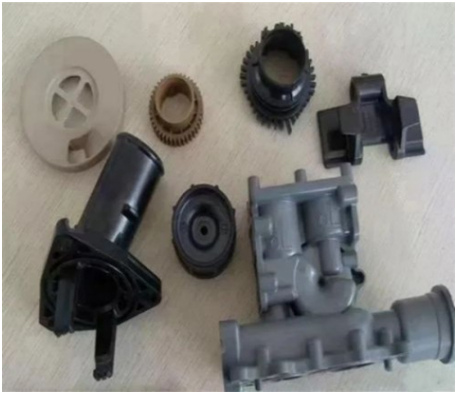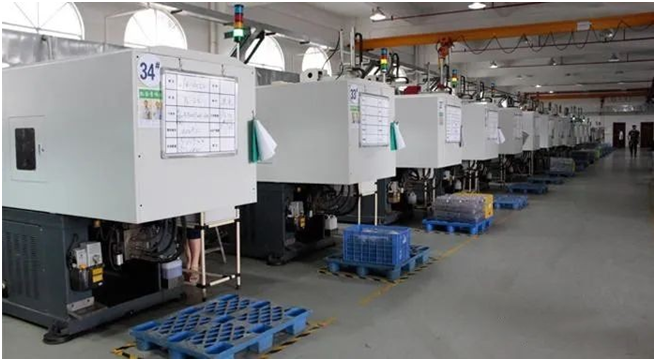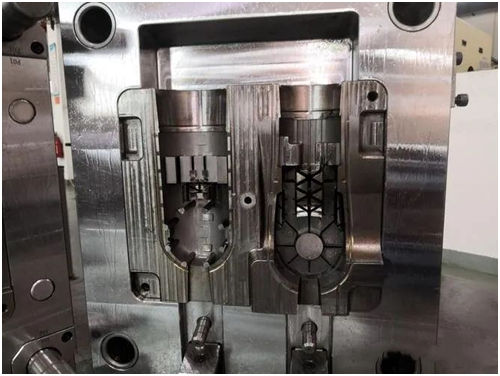©Copyright 2019 SIKO POLYMERS (SUZHOU) CO., LTD All rights reserved.Site Map Powered by iwonder.cn
- Email Uskevin@sikopolymers.com


Ensure drying
Nylon is more hygroscopic, if exposed to the air for a long time, will absorb moisture in the atmosphere. At temperatures above the melting point (about 254 ° C), water molecules react chemically with nylon. This chemical reaction, called hydrolysis or cleavage, oxidizes the nylon and discolors it. The molecular weight and toughness of the resin are relatively weakened, and the fluidity is increased. The moisture absorbed by the plastic and the gas cracked out of the joint clamping parts, light is formed on the surface is not smooth, silver grain, speckle, microspores, bubbles, heavy melt expansion cannot be formed or formed after mechanical strength decreased significantly. Finally, the nylon cleaved by this hydrolysis is completely irreducible and cannot be used again even if it is re-dried.
Nylon material before injection molding drying operation must be taken seriously, to dry to what degree by the requirements of finished products to decide, usually 0.25% below, had better not exceed 0.1%, as long as the raw material dry good, injection molding is easy, the parts will not bring a lot of trouble on the quality.
Nylon had better use vacuum drying, because the temperature condition of atmospheric pressure drying is higher, the raw material to be dried still exists the contact with oxygen in the air and the possibility of oxidation discoloration, excessive oxidation will also have the opposite effect, so that the production of brittle.

In the absence of vacuum drying equipment, atmospheric drying can only be used, although the effect is poor. There are many different terms for atmospheric drying conditions, but here are just a few. The first is 60℃~70℃, material layer thickness 20mm, bake 24h~30h; The second is not more than 10h when drying below 90℃; The third is at 93℃ or below, drying 2h~3h, because in the air temperature more than 93℃ and continuous 3h above, it is possible to make nylon color change, so the temperature must be reduced to 79℃; The fourth is to increase the temperature to more than 100℃, or even 150℃, because of the consideration of nylon exposure to air for too long or due to poor operation of drying equipment; The fifth is injection molding machine hot air hopper drying, the temperature of the hot air into the hopper is raised to not less than 100℃ or higher, so that the moisture in the plastic evaporates. Then the hot air is taken away along the top of the hopper.
If the dry plastic is exposed in the air, it will quickly absorb water in the air and lose the drying effect. Even in the covered machine hopper, the storage time should not be too long, generally not more than 1 hour in rainy days, sunny days are limited to 3 hours.
Control barrel temperature
Nylon melting temperature is high, but when reaching the melting point, its viscosity is much lower than general thermoplastics such as polystyrene, so forming fluidity is not a problem. In addition, due to the rheological properties of nylon, the apparent viscosity decreases when the shear rate increases, and the melting temperature range is narrow, between 3℃ and 5℃, so high material temperature is the guarantee of smooth filling mold.

But nylon in the melting state when the thermal stability is poor, processing too high material moderate too long heating time may lead to the polymer degradation, so that the products appear bubbles, strength decline. Therefore, the temperature of each section of the barrel should be strictly controlled, so that the pellet in the high melting temperature, the heating situation is as reasonable as possible, some uniform, to avoid bad melting and local overheating phenomenon. As for the whole molding, the temperature of the barrel should not exceed 300℃, and the heating time of the pellet in the barrel should not exceed 30min.
Improved equipment components
The first is the situation in the barrel, although there is a large amount of material forward injection, but the reverse flow of molten material in the screw groove and leakage between the end face of the screw and the inner wall of the inclined barrel also increase because of the large liquidity, which not only reduces the effective injection pressure and the amount of feed, but also sometimes hinders the smooth progress of feeding, so that the screw cannot slip back. Therefore, a check loop must be installed at the front of the barrel to prevent backflow. But after installing the check ring, the material temperature should be increased by 10℃~20℃ accordingly, so that the pressure loss can be compensated.

The second is the nozzle, injection action is completed, the screw back, the molten in the front furnace under residual pressure may flow out of the nozzle, that is, the so-called "salivation phenomenon". If the material to be salivated into the cavity will make the parts with cold material spots or difficult to fill, if the nozzle against the mold before removal, and greatly increased the operation of the trouble, the economy is not cost-effective. It is an effective method to control the temperature of the nozzle by setting a separately adjusted heating ring on the nozzle, but the fundamental method is to change the nozzle with the spring-hole valve nozzle. Of course, the spring material used by this kind of nozzle must be resistant to high temperature, otherwise it will lose its elastic effect due to repeated compression annealing at high temperature.
Ensure die exhaust and control die temperature
Because of the high melting point of nylon, in turn, its freezing point is also high, the melting material into the cold mold can be solidified at any time due to the temperature to fall below the melting point, preventing the completion of mold filling action, so high-speed injection must be used, especially for thin-walled parts or long flow distance parts. In addition, high speed mold filling also brings a cavity exhaust problem, nylon mold should have adequate exhaust measures.
Nylon has much higher die temperature requirements than general thermoplastics. Generally speaking, high mold temperature is favorable for flow. It is very important for complex parts. The problem is that the melt cooling rate after filling the cavity has a significant effect on the structure and properties of nylon pieces. Mainly lies in its crystallization, when it in the high temperature in an amorphous state into the cavity, crystallization began, the size of the crystallization rate is subject to the high and low mold temperature and heat transfer rate. When the thin parts with high elongation, good transparency and toughness are required, the mold temperature should be low to reduce the degree of crystallization. When a thick wall with high hardness, good wear resistance and small deformation in use is required, the mold temperature should be higher to increase the degree of crystallization. Nylon mold temperature requirements are higher, this is because its forming shrinkage rate is large, when it changes from molten state to solid state volume shrinkage is very large, especially for thick wall products, mold temperature is too low will cause internal gap. Only when the mold temperature is well controlled can the size of the parts be more stable.
The temperature control range of nylon mold is 20℃~90℃. It is best to have both cooling (such as tap water) and heating (such as plug-in electric heating rod) device.
Annealing and humidification
For the use of temperature higher than 80℃ or strict precision requirements of the parts, after molding should be annealed in oil or paraffin. The annealing temperature should be 10℃~20℃ higher than the service temperature, and the time should be about 10min~60min according to the thickness. After annealing, it should be cooled slowly. After annealing and heat treatment, larger nylon crystal can be obtained, and the rigidity is improved. Crystallized parts, the density change is small, not deformation and cracking. The parts fixed by sudden cooling method have low crystallinity, small crystal, high toughness and transparency.
Adding nucleating agent of nylon, injection molding can produce large crystallinity crystal, can shorten the injection cycle, the transparency and rigidity of the parts have been improved.
Changes in ambient humidity can change the size of nylon pieces. Nylon itself shrinkage rate is higher, in order to maintain the best relatively stable, can use water or aqueous solution to produce wet treatment. The method is to soak the parts in boiling water or potassium acetate aqueous solution (the ratio of potassium acetate and water is 1.25:100, boiling point 121℃), the soaking time depends on the maximum wall thickness of the parts, 1.5mm 2h, 3mm 8h, 6mm 16h. Humidification treatment can improve the crystal structure of plastic, improve the toughness of parts, and improve the distribution of internal stress, and the effect is better than annealing treatment.